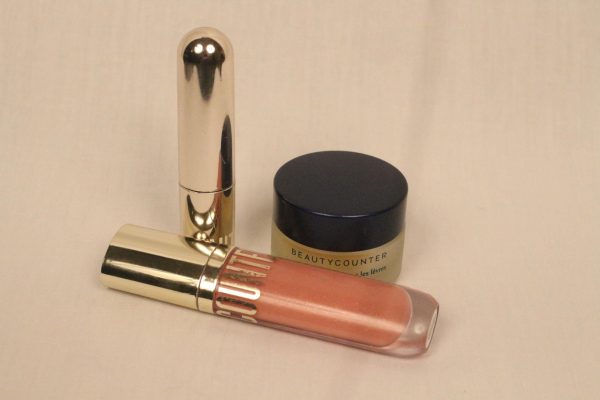“Man” made uniforms
Pommies have been told to “make it work” when trying to fit into a uniform made for a different body.
Sun blazes down on the KHS track, sweat dripping off the blistering skin of the athletes. It soon becomes unbearable to keep a suffocating shirt on, so the boys instantly rip off their shirts to practice. Though the girls feel the same stifling heat, wearing only a sports bra isn’t an option — it’s deemed “distracting.”
Our society has a tendency to control women and their bodies. Whether it’s through school dress code prohibiting girls to practice without a shirt on, reproductive rights or frequent sexualization, women are constantly dealing with the effects of men’s decisions. Unfortunately, women’s sports are not spared. Through exercising in skirts or sprinting in spandex, issues with women’s sport uniforms have been ongoing, not just at KHS, but in society as a whole.
Women’s lacrosse, field hockey and tennis uniforms all include skirts, with no alternative bottoms in the KHS uniform. These short and tight articles of clothing are rooted in sexism. According to www.wp.nyu.edu, women were thought to be too masculine if they played a sport, so to hide their “masculinity,” they wore skin tight, revealing clothing. A woman’s uniform is not made for durability or comfort, but for appearance. If its function was really to improve the game, men would be wearing skirts too.
One field hockey player said she’s constantly worried about the length of her skirt while playing. She said her family and friends often comment on how her skirt “shows off” her butt but she can’t do anything about it because of the limited sizing. There is no length variation in the skirts, so to get a longer length, you need a bigger size which doesn’t always fit a player.
“It will no longer be accepted. One must respect the game and the place.” — Bernard Giudicelli
Other sports, like volleyball, have spandex as a part of their uniform. The material is supposed to allow for easier mobility and flexibility while playing, but look at the male volleyball team, they wear loose-fitted shorts. Weird, right? The list goes on. Just look at beach volleyball players, women’s handball or even women’s football where they are practically wearing underwear.
Legends Football League, previously known as the Lingerie Football League, is known for its bikini bottom shorts and high cut pads revealing a woman’s boobs. If you have never heard about it, ask any teenage boy. The whole point of the sport is to watch women run around wrestling for a ball in nothing more than panties and a bikini top. The league was rebranded in 2012 due to the complaints of the uniforms heavy sex appeal. Little do most men know, the Women’s Professional American Football League (WPFL) is an actual women’s football league that plays in regular uniforms.
There seems to be a common factor between all women’s sports: appearance. No, I’m not talking about the color of a jersey or where the logo is put. I’m talking about the small, constricting uniforms almost every female athlete has to endure.
Serena Williams broke away from this sexist expectation during the 2018 French Open, when she wore a catsuit after the birth of her daughter, rather than a skirt. According to Williams, she wore it because she suffered from severe blood clots post-pregnancy and the suit helped maintain blood flow. She technically did not go against the dress code, but some people were outraged including Bernard Giudicelli, president of the French Tennis Federation.
In an interview with Tennis Magazine, Giudicelli said, “It will no longer be accepted. One must respect the game and the place.” This statement implies that in order to respect the game of tennis, a woman must wear a skirt. It shows the desire to control the appearance of a woman, even when a skirt doesn’t contribute to an athlete’s performance. “It will no longer be accepted. One must respect the game and the place.”
“Having uniforms that are fitted for a singular body type can plummet a dancer’s confidence.”
— Abby Greene
On the other hand, sports like dance rely on the appearance of their uniform. According to Katie Bekebrede, former KHS varsity pommie coach, the pommies most used uniform, the black KHS dress, has been around since 2011, while the JV uniforms have been worn for over 20 years. One pommie said the uniforms are outdated and are curated to bodies from 10 years ago.
Body positivity seems like a revolutionary movement until it comes to a woman’s uniform. Pommies have been told to “make it work” when trying to fit into a uniform made for a different body. It seems hypocritical.
At the varsity football home game Sept. 16, KHS players strutted out, cleaned up in their new all-black, red-accented attire while the pommies and cheer squad stood in the uniforms alumni used to wear during their glory days.
Society still has a long way to go when it comes to the way we treat women. Whether appearance matters or not, every woman should have the freedom to wear a uniform comfortably and without the sexualization of their bodies. For this, change needs to come soon through equal uniform policies. The quicker these uniform mandates disappear, the faster female athletes can compete in an environment where they are respected and secure like the men around them.
Your donation will support the student journalists of Kirkwood High School. Your contribution will allow us to purchase equipment and cover our annual website hosting costs.

She/Her
Hobbies and Interests: soccer, basketball, hanging out with friends
Favorite song: New Light by John Mayer
Favorite Quote: "When I'm...

she/her
Hobbies and Interests: Running, baking/cooking, reading, listening to music, traveling
Favorite Song: “The Night We Met” by Lord Huron
Favorite...






















Paul Milligan • Nov 19, 2022 at 7:06 am
Very powerful, well written, and well argued article. I hope you get a response from your school administrators. It should be read at your school board meeting. I hope it gets momentum for change. It was paradigm shifting for me, a 65 year old male.